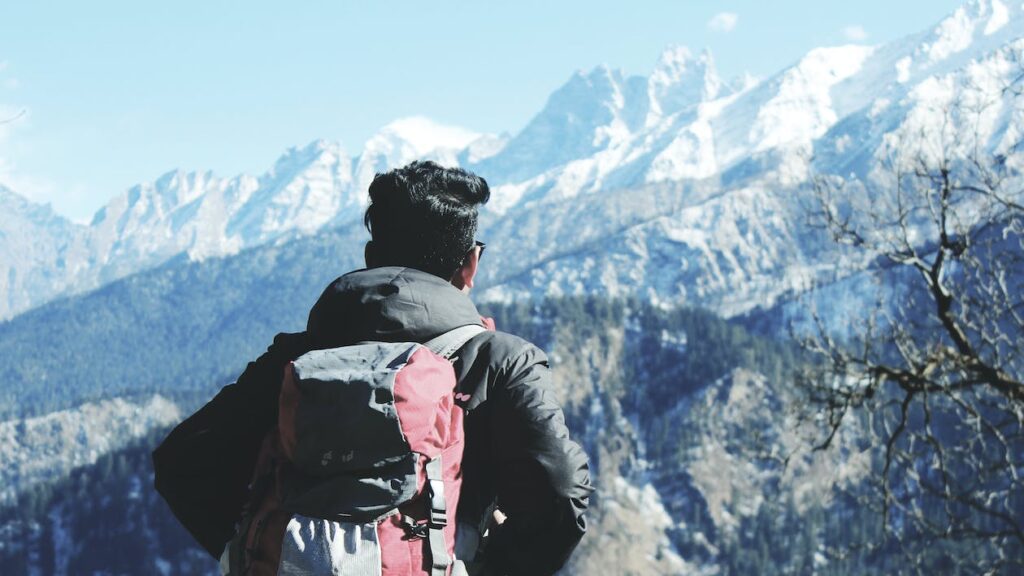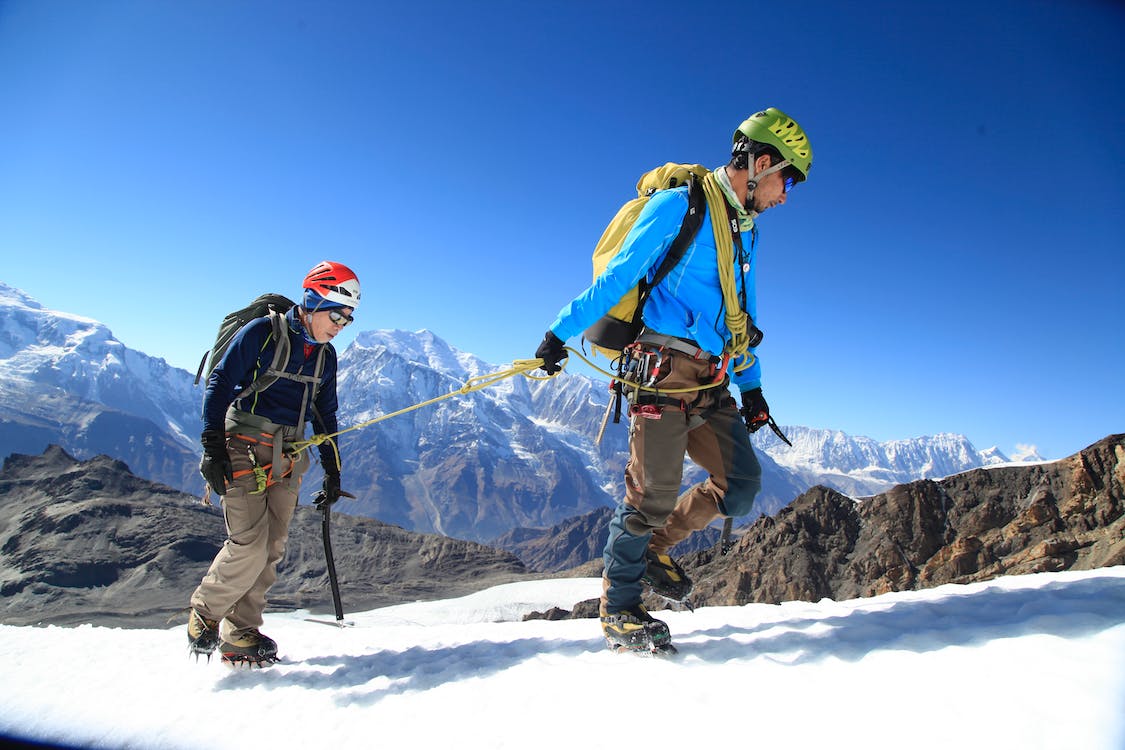The Indian Himalayas stand as a testament to the Earth’s majestic beauty. These towering peaks, draped in snow and lush greenery, have been the dream destination for trekkers and adventurers from around the world. Nestled in the northern part of India, the Indian Himalayas offer a breathtaking journey through some of the most enchanting landscapes on the planet. In this blog, we invite you to embark on a virtual journey to the Indian Himalayas, exploring its top destinations, the art of planning a trek, cultural experiences, safety guidelines, and more.
Top Destinations for Trekking
The Indian Himalayas boast an array of destinations that cater to every kind of trekker. From the mystical landscapes of Manali to the lunar-like terrains of Leh-Ladakh, each destination has its unique charm.
Manali, in Himachal Pradesh, is a gateway to many beautiful treks, including the famous Hampta Pass trek. Its lush valleys, serene rivers, and high mountain passes make it a popular choice for trekkers. Don’t forget to explore the local culture and indulge in Himachali cuisine.
Leh-Ladakh is another gem in the Himalayan crown. With its stark, barren landscapes and the Chadar Trek on the frozen Zanskar River, it’s a challenge for adventure enthusiasts. It’s also an opportunity to witness the Ladakhi way of life and immerse yourself in their culture.
Rishikesh, in Uttarakhand, is the ultimate destination for spiritual trekkers. The trek to the Valley of Flowers, a UNESCO World Heritage Site, is a must-do. Rishikesh also offers the thrill of white-water rafting in the Ganges and yoga retreats by the riverbanks.

Planning Your Trek
Trekking in the Himalayas requires meticulous planning. Knowing when to embark on your adventure, the gear to carry, and understanding the permit and regulation requirements are essential.
The best time for trekking varies by region. Spring (April to June) and autumn (September to November) are generally ideal, offering pleasant weather and clear skies. During these months, you can explore a range of treks without extreme cold or heavy monsoon rains.
As for gear, be prepared for varying weather conditions. Warm clothing, sturdy trekking boots, a good-quality backpack, and essential camping gear are must-haves. Carrying a first-aid kit, trekking poles, and a reliable map is essential. It’s crucial to research and prepare your gear list according to the specific trek you plan to undertake.
Permits and regulations vary by trek and region. Some areas require permits to maintain visitor numbers and preserve the environment. It’s essential to research and obtain the necessary permits well in advance. Local guides and trekking companies can assist with this process.
Trekking Routes and Difficulty Levels
The Indian Himalayas offer a plethora of trekking routes catering to various skill levels, from beginner to advanced.
- Beginner Treks: If you’re new to trekking, start with trails like Triund in Himachal Pradesh or the Nag Tibba trek in Uttarakhand. These are relatively easy and provide a taste of the Himalayan experience.
- Intermediate Treks: Gradually move on to more challenging treks like the Beas Kund trek or the Kuari Pass trek. These routes present moderate challenges and stunning views.
- Advanced Treks: For seasoned trekkers seeking a real challenge, the Chadar Trek in Ladakh or the Stok Kangri trek offer an adrenaline rush. These treks demand technical skills and high fitness levels.

The diversity of trekking options in the Indian Himalayas ensures that there’s something for everyone, regardless of their experience level.
Cultural Experiences
One of the most captivating aspects of trekking in the Indian Himalayas is the rich cultural tapestry of the region. Each trek presents opportunities to interact with local communities and experience their unique traditions.
In Himachal Pradesh and Uttarakhand, you can attend local festivals and fairs, which provide a glimpse into the cultural heritage of these regions. Taste local cuisine, including dishes like Chana Madra and Dham, which are a treat for your taste buds.
In Ladakh, the monasteries and Buddhist festivals are a window into the spiritual side of the Himalayas. You can witness monks performing intricate rituals and learn about their way of life.
To fully immerse in these cultural experiences, it’s essential to respect local customs and traditions. Trekkers are encouraged to engage respectfully with the communities they encounter and learn from the wisdom of the Himalayan people.
Safety Tips and Guidelines
The Indian Himalayas offer incredible experiences, but they come with inherent risks, especially at high altitudes and in remote areas.
Altitude sickness is a real concern. It’s crucial to acclimatize properly and recognize the symptoms of altitude sickness. Ensure you have a knowledgeable guide and follow their advice on managing altitude.
Weather can be unpredictable, so carry appropriate clothing for various conditions. It’s wise to check the weather forecast before starting a trek and to be prepared for sudden changes in weather.
In case of emergencies, have a plan in place. Ensure you carry communication devices, know the nearest medical facilities, and understand how to call for help. Safety should always be the top priority.
Packing and Preparation
Before setting out on your Himalayan adventure, you need to prepare physically and ensure you have the right gear.
A comprehensive packing list should include warm clothing, waterproof gear, a good-quality backpack, sleeping bag, and essential camping equipment. Don’t forget personal items like sunscreen, sunglasses, and a hat.
Physical preparation is equally important. Start a fitness routine that includes cardio and strength training. Trekking in the Himalayas can be physically demanding, and being in good shape is essential for a safe and enjoyable experience.
Trekkers’ Stories
Finally, let’s take inspiration from trekkers who have ventured into the Indian Himalayas and returned with remarkable tales. Their stories not only share the thrill and adventure but also the transformative power of the Himalayas. Trekking in this region often leaves trekkers with lifelong memories and a deep connection to nature.
Conclusion
trekking in the Indian Himalayas is an unparalleled adventure. The diverse landscapes, cultural richness, and challenges the region offers make it a dream destination for trekkers. Remember to plan meticulously, immerse yourself in the local culture, prioritize safety, and prepare physically. With the right approach, you can make your trekking adventure in the Indian Himalayas a journey of a lifetime.
